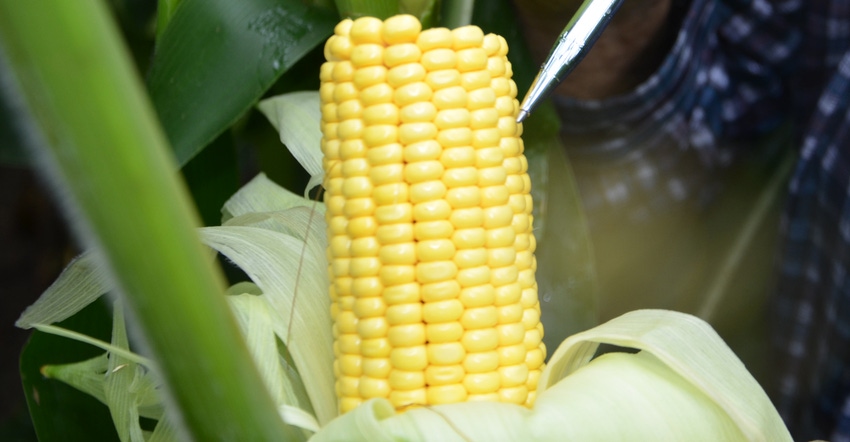July 8, 2021

Just when I think we have seen everything, Mother Nature shows us something new. Our Corn Watch ’21 field was planted April 25. We closely watched designated areas of this field, inserting flags of different colors when each plant emerged. We continued adding flags as slow-emerging plants in the area marked for our studies continued to appear.
It was like the teacher who was watching the late comers arrive at school. A few ambitious kids showed up early, but it got very cold for a few days, and the other kids decided to sleep in and show up later. They got marked by different colored flags. Fortunately, they did not lag too far behind. Is Mother Nature going to punish those plants by giving them smaller progeny through fewer kernels? It will be very interesting to see what happens in the grain fill period.
It takes 50 to 60 days after pollination to reach physiological maturity, depending on relative maturity of the hybrid and temperatures prevalent in the area. This is the payoff time for the corn plant. The primary focus of plants is to fully develop kernels. Corn likes cooler temperatures and sufficient water during this critical period for optimum yields.
If pollination of some of the ovules is not successful due to stress, it could result in incomplete kernel set. Certain insects such as Japanese beetles or corn rootworm beetles, which feed on pollen that falls on silks, can interfere in the pollination process and reduce kernel set. If there is severe heat, lack of moisture or disease stress during grain fill, plants may start to cannibalize their stalks and leaves to fulfill the growing needs of their progeny, the kernels.
Negotiating grain fill journey
Heat and drought stress also can delay silk emergence and cause pollination problems. Late-emerging silks may not find any pollen left in the field for fertilization.
The first silks to emerge come from the butt of the ear and the last silks emerge from the tip. So, the kernels near the tip are more prone to be left out of the pollination process. That’s why you might consider planting cornfields with hybrid pairs in alternating strips that are two to three days apart in their pollen-shed dates. Your seed rep should be able to help you pick out pairs of hybrids that will stretch out the pollen shed period when you order your seed.
Just like animals, plants don’t like to produce runts in their progeny. If there is stress during grain fill, plants start to abort the youngest kernels, causing tip dieback, so the remaining kernels can fully develop. Physiologic maturity, or black layer, occurs at 32% to 35% grain moisture, depending on the hybrid. Stress before this period can cause kernel abortion and light test weight. If plants divert nutrients from stalks to “feed” the kernels, it can lead to premature death and susceptibility to stalk rot diseases.
Hopefully, the late comers we flagged this spring will not be overly penalized, and we will have good yields this year.
Nanda is director of genetics for Seed Genetics Direct, Jeffersonville, Ohio. Email [email protected] or call 317-910-9876.
About the Author(s)
You May Also Like






